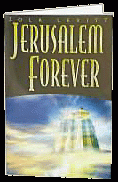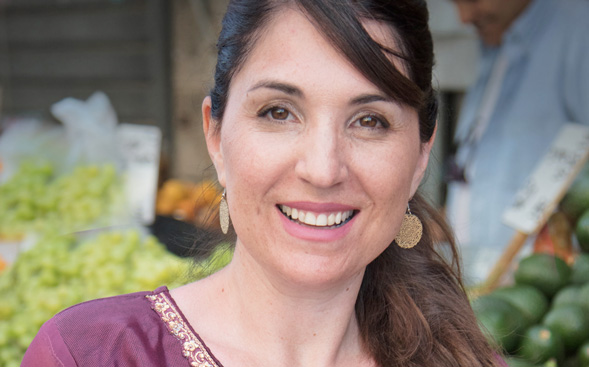
FROM SARAH, OUR SABRA
ON THE GROUND IN ISRAEL
Dear Friend,

credit: Jerusalem Transportation Network
Greetings from the Holy Land. Modern Jerusalem is a very special place to visit — some say that it’s the most extraordinary place on Earth. Along with contemporary elements, the city offers layer upon layer of archaeological sites, fascinating museums, delicious food, and more. Remarkably, it maintains all this while being one of the most contested cities in the world.
For centuries, Jerusalem has been sacred to three major religions: Judaism, Christianity, and Islam. Many people associate Jerusalem with King David, though its story begins in Genesis chapter 22. God commanded Abraham to take his son Isaac and “go to the land of Moriah. Offer him up as an entirely burned offering there on one of the mountains that I will show you” (Gen. 22:2). Abraham obeyed God and set out on his journey the next morning. “On the third day, Abraham looked up and saw the place at a distance” (Gen. 22:4).
Incidentally, the first time the word worship appears in the Bible is during this stirring event and at this special place: Abraham commanded his servants, “Stay here with the donkey. The boy and I will walk up there, worship, and then come back to you” (Gen. 22:5).
Jerusalem’s Origins
God specifically led Abraham to Mount Moriah. This was the place, later called Jerusalem (Josh. 10:3), which King David conquered from the Jebusites (2 Sam. 5:6–10) and established as the capital of Israel. King Solomon would build the First Temple here (1 Kings 6). Zerubbabel later led the returning exiles to rebuild the foundations for the Second Temple (Ezra 1–3). At this place, God would also sacrifice His own Son for the salvation of the world (Isa. 53:10; Acts 2:23; Rom. 3:25; 8:32).
In 586 B.C., King Nebuchadnezzar of Babylon conquered Jerusalem — destroying the city and the Temple and exiling the Jews. Seventy years later, however, after Babylon had fallen to a new world power, Persian King Cyrus decreed that the Jews could return to their homeland. Thus, some returned to Jerusalem and started building the Second Temple, later rebuilding the city.
As one nation conquered another in the subsequent centuries, both Greece and Rome controlled Jerusalem. Then in 37 B.C., the Romans appointed Herod as king of the Jews.
Expansion and Destruction
King Herod embarked on a massive Jerusalem building project. He expanded the city — constructing many grand buildings, theaters, palaces — and enlarged the Temple Mount. Herod’s investment made the Second Temple the largest and most opulent building in the region. The Jewish Talmud says: “Whoever has not seen Herod’s Temple has not seen a beautiful building in his life.”
In A.D. 66, however, the Jews revolted against Rome. This led to the destruction of the Second Temple in A.D. 70., after which the Romans erected a pagan temple in its place. When Arabs conquered Jerusalem in A.D. 636, that pagan temple became the foundational structure on which the Muslims built the Dome of the Rock (modeled on the Church of the Holy Sepulchre) — still a functioning mosque with a gold dome on the Temple Mount.
Though Crusaders conquered Jerusalem in 1099, the Muslim warrior Saladin recovered it in 1187 and again established Muslim rule. Most of the city, however, lay in ruins, and its inhabitants were poor. Jerusalem would remain a Muslim-controlled city for the next 700 years.
Building Over the Ruins
During this era — especially in the 15th century — the Muslims built arches over ruined structures, added platforms on top of the arches, and constructed new buildings on the platforms. Thus, the city became closer in height to the Temple Mount. The city walls visible today, along with the four quarters (Jewish, Armenian, Christian, and Muslim) structure of the Old City, were all established as early as the 15th century.
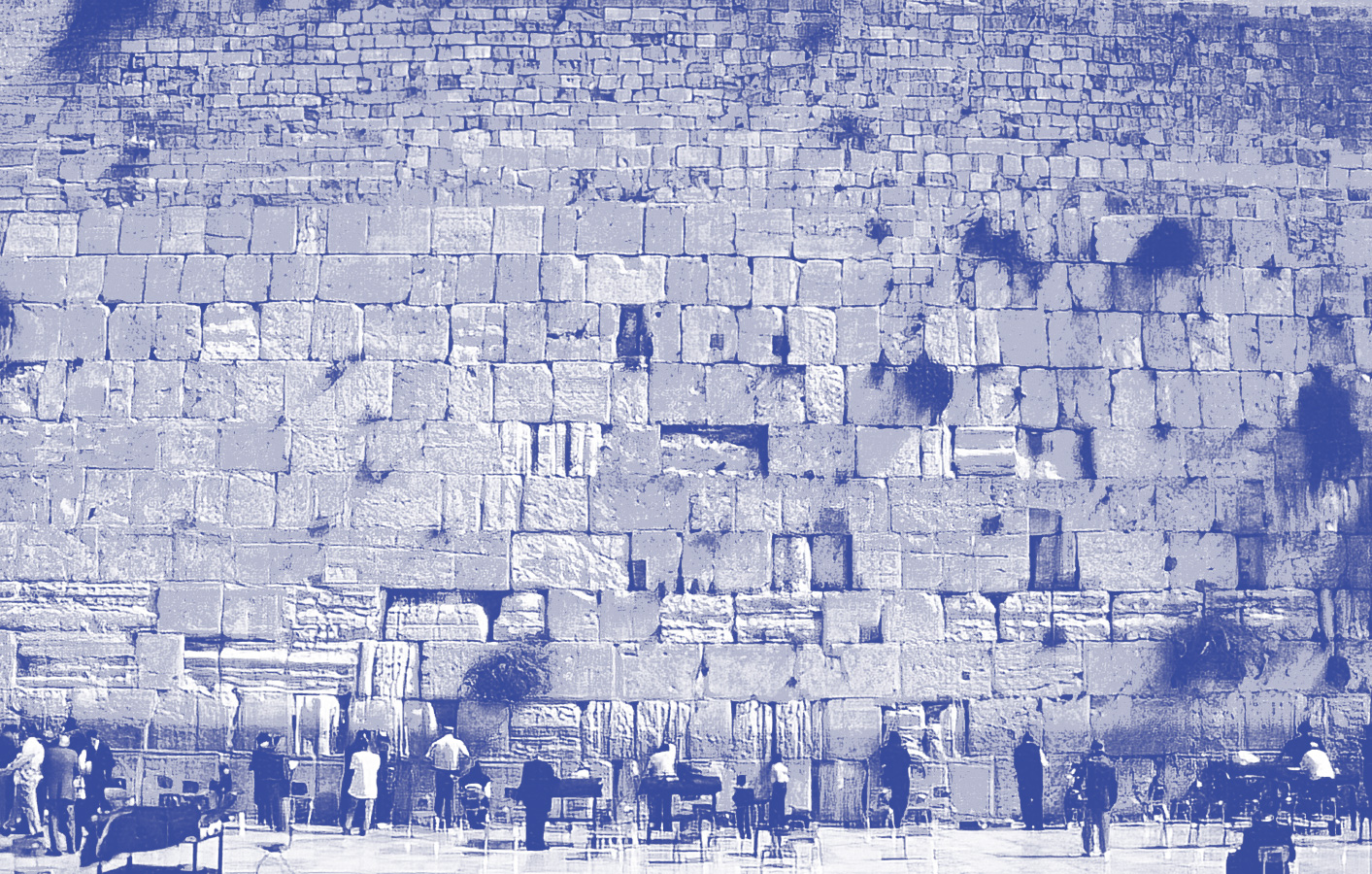
This detail is important because most of what you see in Jerusalem today are buildings built during the Muslim periods — they do not reflect the Jerusalem of Biblical times.
In 1917, Jerusalem came under the British mandate, which lasted 31 years. Finally, the Jews declared their independence and established the modern State of Israel in 1948. Still, Jews had no access to the Temple Mount, the Western Wall (the Temple Mount’s wall closest to the location of the Second Temple), or the surrounding area. But during the Six-Day War in 1967, Israeli soldiers finally liberated the Western Wall. That moment marked a turning point in Jewish access to the places that Judaism holds sacred.
Since then, abandoned Muslim homes that had been built next to the Western Wall were demolished and Israel developed what we know as the Western Wall Plaza. This new access enabled many archaeological digs that have uncovered ruins and artifacts from Biblical Jerusalem. Still, because Muslims control the Temple Mount, no one could dig on or under the Roman-built platform and seek to uncover First or Second Temple foundations, artifacts, and so forth.
While growing up here in Israel, I visited Jerusalem often and became familiar with most of the sites that tourists see today. Because of this background, I have no special reaction to being in Jerusalem — it is a fairly normal experience for me. However, this month, as part of a new project I am working on, I visited an entirely different Jerusalem when I entered the Western Wall tunnels for the first time.
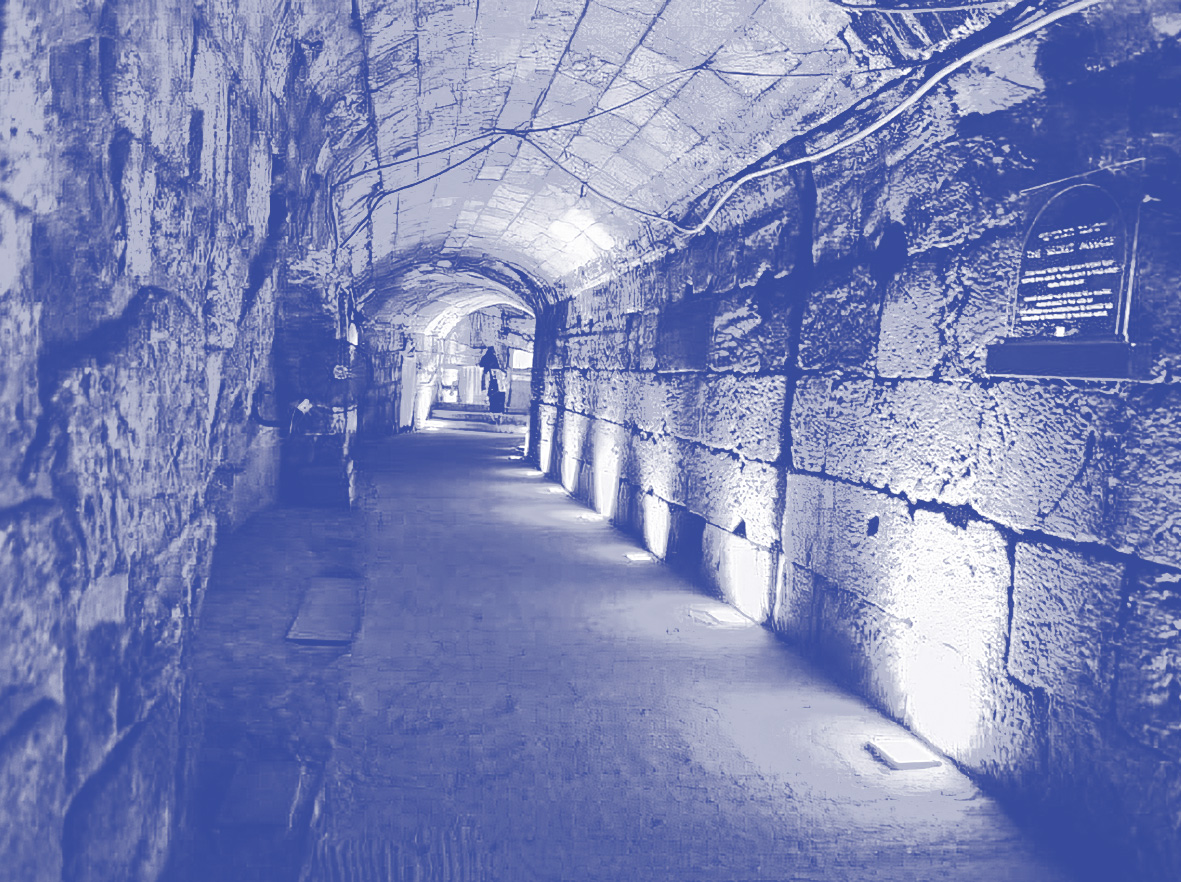
credit: Abir Sultan / Flash90
Experiencing Ancient Jerusalem
The tunnels are a series of buried walkways, streets, and buildings joined by underground passages that lie beneath the Muslim Quarter. Jews and other visitors can walk through the actual streets of Second Temple Jerusalem.
I am currently writing a historical novel that is set in first century Jerusalem. The story follows the life of Apostle Paul’s nephew. He embarks on a quest to redeem the family name after his future is decimated when Saul becomes a Believer in Yeshua/Jesus as Messiah — all while trying to survive the Roman destruction of Jerusalem in A.D. 70. This story weaves together Jewish politics, Roman power, and personal tragedies and victories with Biblical events, the destruction of the Temple, and the spread of early Christianity throughout Judea, Galilee, and Rome.
My research led me to the latest discoveries in the Western Wall tunnels — large aristocratic homes, street fountains, Jewish ritual cleansing baths (mikveh), and more. As I entered the cool atmosphere of the tunnels, I immediately felt like I had moved to a different time and place.
I walked the covered streets and entered the rooms, imagining how life might have been for the priests, the Sadducees and Pharisees, and others who lived here. I strolled on the very stones where they once walked and entered the halls and rooms they occupied. Our guide, a very knowledgeable, religious Jewish woman, brought to life the reality of the Second Temple Period and explained the connection between Jewish history and the ideas that Jerusalem represents.
Engaging with the Bible
The visit both challenged and excited me regarding my writing project. When the tour finished, our guide allowed us to remain in the tunnels. I wandered away from the group and entered an area of arched streets, passing through the connected structures. There, I could emotionally engage with the New Testament accounts — the people and their customs, struggles, and thoughts — which all came alive to me. My Biblical knowledge was enhanced as I encountered the very locations where some Biblical events occurred.
As I returned to the Western Wall Plaza, it took me a few moments to realize I was “back” in 2024. I considered that if this experience was so meaningful to me — an Israeli Believer who has visited Jerusalem many times — how much more life-changing would it be for a Believer visiting Jerusalem for the first time? The impact of such a trip on your understanding of the Bible, especially the New Testament, would indeed be profound.
If you are able, I encourage you to plan for a Holy Land pilgrimage next year. For many people, a tour to Israel might be a costly — even sacrificial — undertaking. However, I am convinced that it will build your faith and forever enhance the way you read and respond to the Bible.
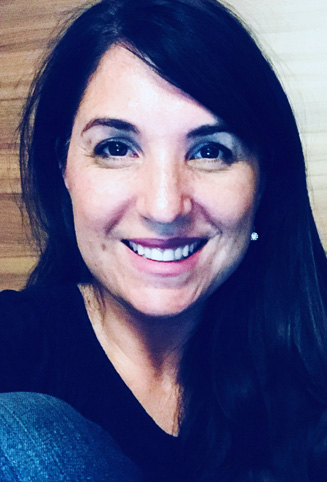

Im tirdefu lada-at oto —“Press on to know HIM!” (Hosea 6:3 NLT)
Many blessings from Israel,

Sarah Liberman
P.S. I am privileged to meet Zola Tours pilgrims regularly in Caesarea, where I share a local perspective on Biblical and current events related to that area. I hope you will consider joining the Spring 2025 tour so that I can see you then. And, in the meantime, please support ZLM’s Bible teaching. ✡
 Still Planning & Preparing
Still Planning & Preparing
We realize that planning a tour to a country at war may seem adventurous. Even so, we are still scheduling tours to Israel because we believe it remains a place that all Believers should experience. Shortly after it is safer to explore the Bible lands again, we will return.
Please let us know if you would like to be on our waitlist; we will keep you updated with the latest information we receive. Sandra, our tour manager, is available to answer your questions and help you prepare for the Bible study tour of a lifetime. Contact Sandra at 214-696-9760, travel@levitt.com or levitt.com/tours.
| Deluxe — Israel | Mar. 24–Apr. 3 | $5,988 |
| Grand Petra — Israel & Petra | Mar. 24–Apr. 6 | $7,688 |
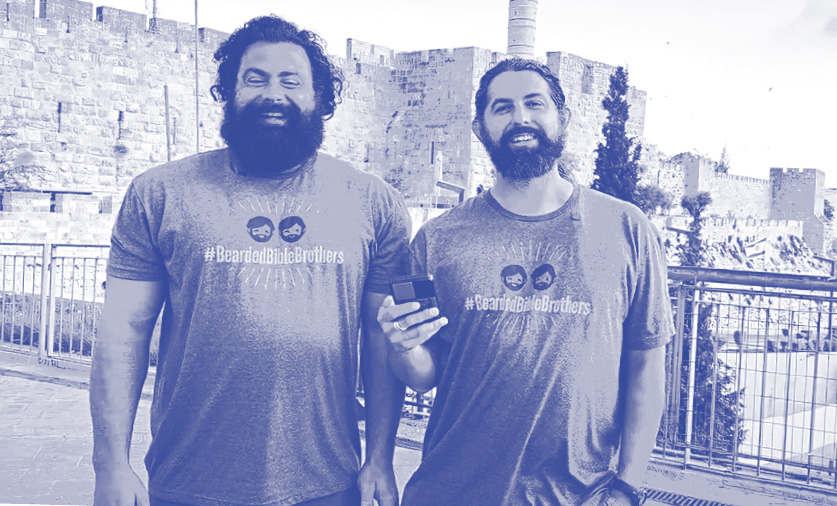
A Note from Joshua and Caleb Colson
Unfortunately, war conditions in Israel have resulted in the cancellation of nearly all commercial flights to Israel, disrupting tourism once again. But as Sarah mentioned, when pilgrims visit the Bible lands, they see for themselves so many important discoveries that corroborate Scripture. Extensive archaeological investigation has confirmed many events and locations that the Word of God mentions — far more than in any other historical document or book.
During our visit to Israel last fall, God directed us to film the new series, Josiah and the Last Reformation. In one program (filmed on Oct. 8, 2023 — the day after Hamas’s assault on Israel), we take viewers to the Western Wall tunnels. In that underground city, we teach about the High Priest Hilkiah discovering the lost Torah scroll within the Temple. The long-forgotten streets and alcoves buried beneath the ground are a fitting backdrop for our focus on uncovering what was lost: the truth of God’s Word.
Though we originally planned to broadcast the Josiah series in July, we felt God leading us to postpone it so that we could present timely interviews related to Israel’s war with Hamas. Timing is everything to God. And just as He intricately ordained our filming during the war’s outbreak, so now is His moment to communicate the message of Josiah — it is time for the nations to repent before the Lord!
Not surprisingly, the mainstream media has flooded the internet and airwaves with current reports about many Christian ministers’ recently exposed sins. As we warn in Josiah, this merely reflects 1 Peter 4:17 — “it is time for judgment to begin with God’s household.” We do not rejoice over the fall of any church leaders; in fact, we grieve deeply. However, many Believers fail to recognize this as a time of God’s correction, designed to draw His people back to Himself. “Because the Lord disciplines the one He loves, and He chastens everyone He accepts as His son” (Heb. 12:6).
This message should excite you — if the Church finally awakens to the need for repentance, revival is just around the corner! The Heavens and Earth are being shaken, as Hebrews 12:25–29 explains. Our God is a consuming fire, and as this fire spreads around the world, all people must make a choice. Some will accept reproof and be refined by the Holy Spirit, leaving only silver and gold. Others will harden their hearts as the fire consumes the wood, hay, and stubble, and be left with nothing.
This is that moment for the Body of Messiah to reform, choose righteousness, and partake in the final Last Days’ outpouring of God’s presence that will change everything (Acts 2:14–21)!
Sha’alu shalom Yerushalayim! — “Pray for the peace of Jerusalem!” (Psalm 122:6),

Joshua and Caleb,
The Bearded Bible Brothers
P.S. When you encounter God’s refining fire, which choice will you make? ✡

Our Jewish Roots TV programs in September
David and Kirsten Hart
The ongoing conflict in Israel affected what we broadcast on OJR and posted on social media this past summer. Still, Joshua and Caleb have worked tirelessly to present cutting-edge interviews with credible leaders in order to help viewers relate today’s news to the fulfillment of Biblical prophecy.
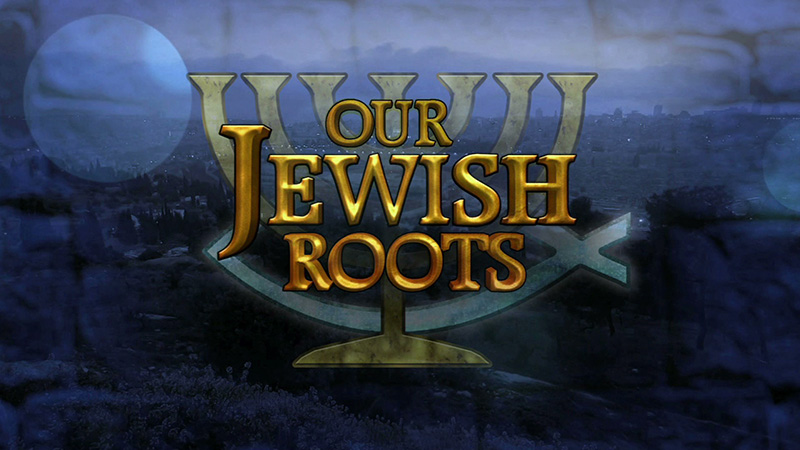
We hope that in addition to watching our weekly television program, you also visit our social media sites and levitt.com, where you can find additional teaching and commentary. Along with this Personal Letter, our monthly Levitt Letter news magazine offers contemporary teaching that will bless you as a loyal supporter of Israel.
In September, we begin with a program featuring viewers’ theological questions that Joshua and Caleb will answer. Throughout this interaction, we’ll also present clips from our new series, Josiah and the Last Reformation, which our crew filmed in Israel last October when Hamas attacked.
Viewer Letters and Josiah Preview — From the studio, David and Kirsten Hart ask the Bearded Bible Brothers questions from viewers who have written to ZLM. This program also features a sneak peek at Josiah and the Last Reformation.
Josiah and the Last Reformation
Worst Grandfather Ever — Do you have fond memories of your grandfather, or was he a Manasseh? In Josiah’s day, moral decline was rampant, just as we see in many people today who have rejected Biblical truth. How does Josiah’s life give us hope for our present time?
The Boy King — Can one person break the destructive cycles in a family line? This week, we’ll discuss the wickedness of Amon, Josiah’s father, along with the sin and eventual repentance of his great-grandfather Manasseh. Despite Josiah’s young age when he became king, he steadfastly sought God and initiated religious reforms.
Forewarnings of Destruction — This program reviews the recurring pattern of sin, warning, and judgment that the Israelites experienced throughout their history. Despite repeated admonitions from God’s spokesmen, the Southern Kingdom of Judah repeated the same mistakes as the Northern Kingdom of Israel and ultimately fell to Babylon. Unfortunately, this cycle is evident even in our time.

 Zola Levitt Ministries is ECFA approved and has Charity Navigator’s top rating of 4 stars, plus Ministry Watch’s Give With Confidence Score of 100.
Zola Levitt Ministries is ECFA approved and has Charity Navigator’s top rating of 4 stars, plus Ministry Watch’s Give With Confidence Score of 100.

